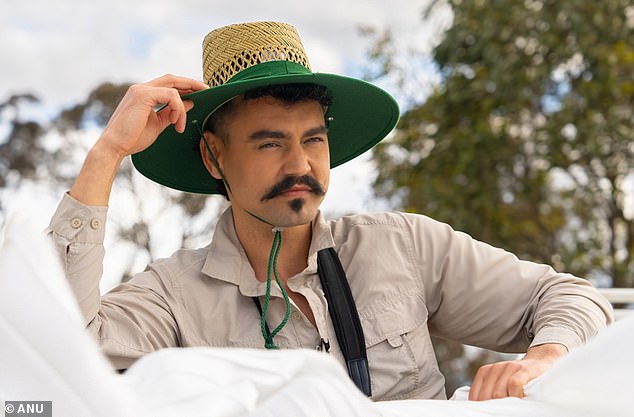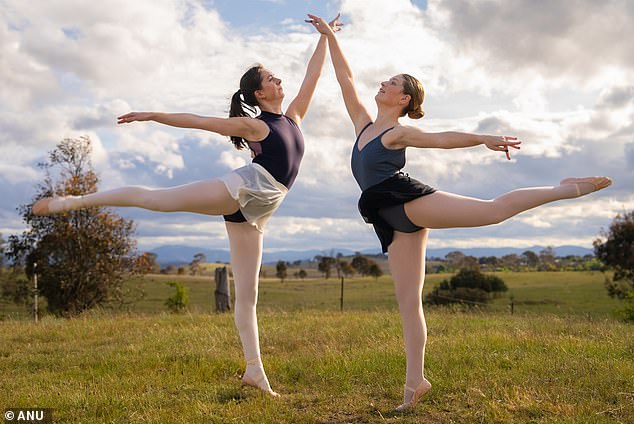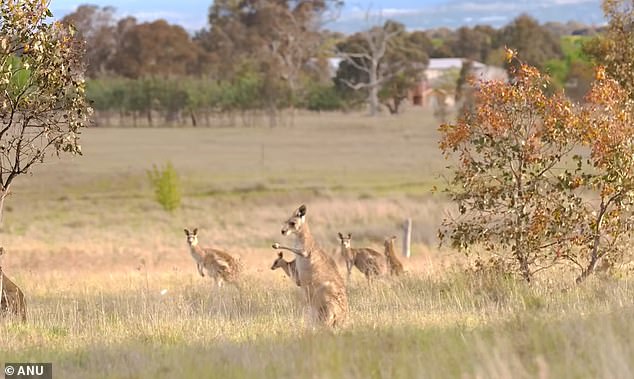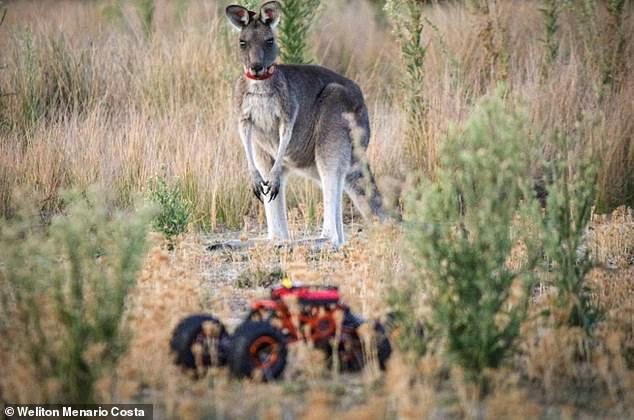From Queen’s Brian May to Professor Brian Cox, some of the world’s brightest scientific minds are also musical.
Now, a biologist from Brazil intends to join such esteemed names, with an original melody about kangaroos.
Dr Weliton Menário Costa, a kangaroo expert at the Australian National University in Canberra, won a competition to convey his PhD through song and dance.
Their new song ‘Kangaroo Time (Club Edit)’ has racked up over 7,000 listens on Spotify and is apparently already a hit in Australian nightclubs.
Meanwhile, the music video stars Dr. Costa and a group of exotic dancers who do their best to recreate the famous marsupial’s movements.

Dr Weliton Menário Costa is a PhD from the Australian National University (ANU) and is described as one of the world’s leading researchers into kangaroo behaviour.
‘Dance your PhD’ is an annual competition in which researchers from around the world are tasked with explaining their PhD in the simplest terms through song and dance.
“For me, winning this contest is equivalent to winning Eurovision,” said Dr. Costa, who as a musical artist goes by the name WELI.
“I think it is extremely important that we celebrate diversity and creating a video explaining the personality of the kangaroo was a great means to do this.”
The song ‘Kangaroo Time (Club Edit)’ features bongos, strings and saxophone touches, all driven by a hard-hitting, high-tempo beat.
There are few lyrics, apart from an oft-repeated line from Dr. Costa: “I hope you don’t mind some things I learned from my babysitting days.”
The video, filmed at the Grasslands Nature Reserve in Canberra, shows a variety of dancers performing kangaroo moves and behaviours, from samba dancers, drag queens and ballet artists, as well as Dr Costa himself.
The dancers, without choreography, improvise their movements, responding to cues and interacting with each other as kangaroos would.
As expected, it features a lot of jumping, something kangaroos do to cover long distances in search of food and water.


The new video features a variety of dancers performing the kangaroo’s movements and behaviors, including samba dancers, drag queens and ballet artists, not to mention Dr. Costa himself.


Ballet dancers Olivia Sutton and Jasmine Zolinger communicate Dr. Costa’s research on kangaroos through dance.


Kangaroos are very socially aware and will adjust their behavior based on cues from other kangaroos, according to the expert.
In one sequence, two dancers pretend to fight kangaroo-style and arch their backs, believed to be a trick kangaroos use to maintain balance or listen more attentively.
Perhaps less faithful to Australia’s national animal are other improvised moves, such as salsa, classical ballet, twerking and the completely uncategorizable.
Originally from Brazil, Dr Costa moved to Canberra to undertake a PhD in animal behavior at the ANU Research School of Biology, which he completed in 2021.
Using a remote-controlled car, Dr Costa spent more than three years studying behavioral differences in a group of more than 300 wild eastern gray kangaroos in Wilsons Promontory National Park, Victoria.
“We wanted to see how roosters react to the strange sight of an unknown object: whether they would jump away, stay still, or whether they would be curious enough to approach the car,” he said.
“Our experiments also involved walking directly up to a kangaroo to see how the animal would react.”
He found that kangaroos like to socialize in groups, but prefer smaller social circles and adjust their behavior based on cues from other kangaroos.
“Think of it like a nightclub,” the biologist explained.
“You might see a guy sitting alone, looking quite shy, but then when his more outgoing friends come up to him and are dancing, the shy guy acts a little more outgoing around them.”


Dr. Costa’s research consisted of observing how kangaroos react to a small remote-controlled car in their natural habitat.
Also like humans, the kangaroo personality manifests itself early in life, such as confidence and sociability.
Mothers and their children have similar personalities, as do siblings, which could be due to genetics, although Roo’s personalities are also thought to be influenced by their experiences.
Kangaroos live in “fission-fusion” societies, meaning that the size and composition of social groups change as time passes and the animals move through the environment.
“Their group composition changes every 9.3 minutes on average while they forage together,” Dr. Costa said.
“Members then begin to disperse and move to other groups, and an individual’s personality will influence who they meet.
“Individuals who behave more similarly are more likely to be found in the same groups as individuals who behave more differently from each other.”
Dr. Costa’s thesis, “Personality, social environment and maternal-level effects: insights from a wild kangaroo population,” can be seen online.
He will also release a new EP called ‘Yours Academically, Dr WELI, which also includes the songs ‘El Doctor’ and ‘Interlude (Yours Academically)’.

